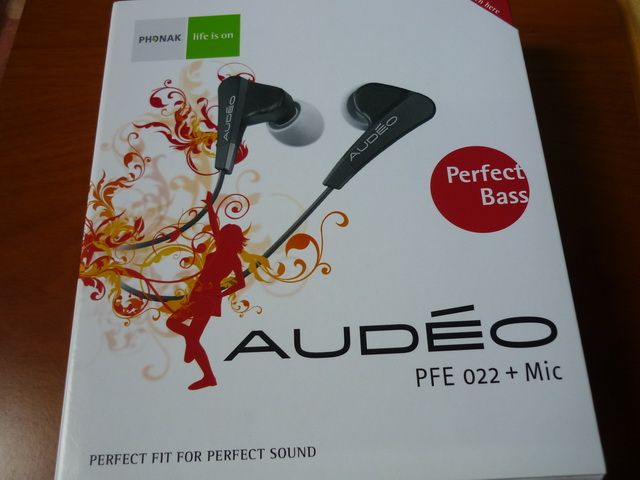
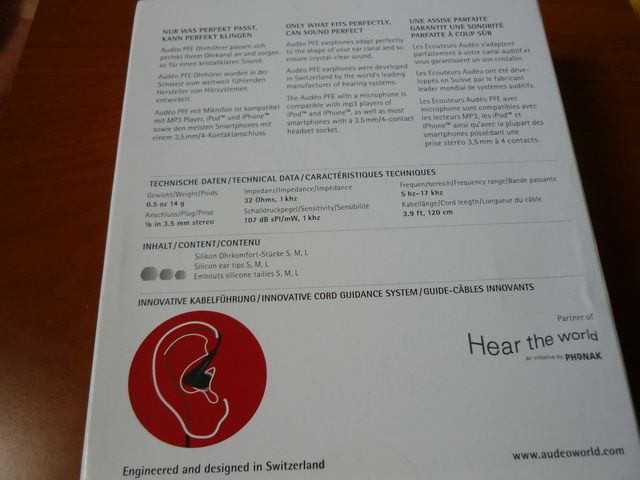
Spec
Driver: Single balanced armature
Sensitivity: 107 dB @ 1 mW
Impedance: 32 Ohm @ 1 kHz
Frequency range: 5 Hz – 17 kHz
Cable: Y-cord, 120cm
Connector: 3.5 mm gold-plated straight mini plug
PFE 02x comes with iPhone / iPod compatible microphone.

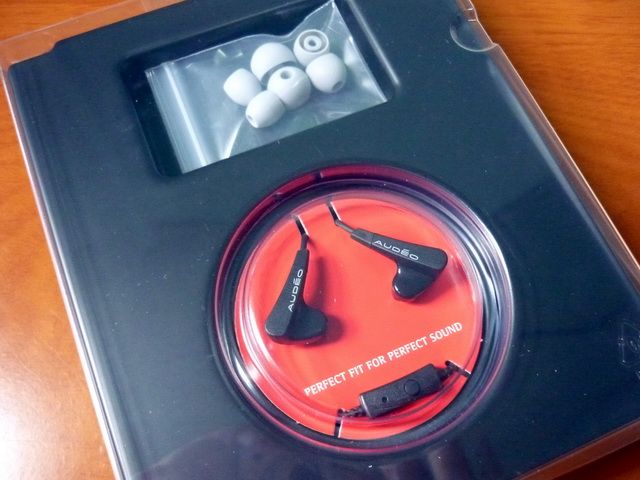
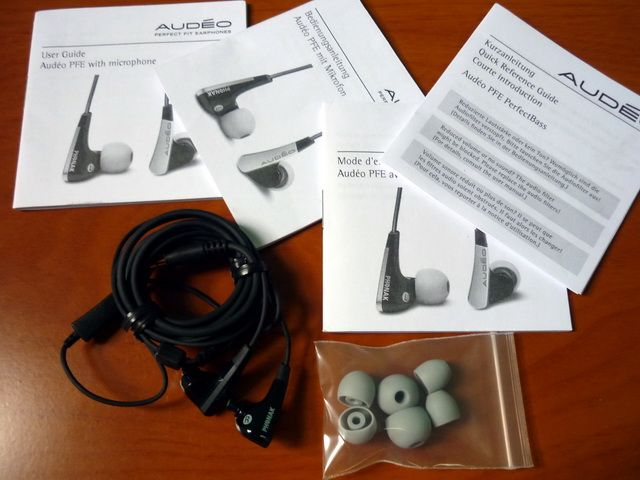
Packaging, Accessories and Build Quality
Packaging on the Perfect Bass series is more on the minimalist’s approach, though it is not to say it is poor in any way. It is not quite as classy as the original PFE, but still sufficiently enough to showcase the IEM itself. Unlike the original PFE where the accessories are abundant, the Perfect Bass series is aimed to cut down the price tag by reducing the amount of accessories to minimum. This means all you get from Perfect Bass are the basic three pairs of different sized single flange silicone eartips and nothing more.
The IEM itself is actually identical between the original PFE and the new Perfect Bass – well, almost. To give the new IEM a different sound, or should I say a more “crowd-pleasing”/ bass oriented sound, Phonak use a new green colored filter on the Perfect Bass series as opposed to the grey and black filters on the original PFE (and we shall discuss more of this on the next section). By swapping the filter, you can actually make an original PFE sounds just like the Perfect Bass series, and vice versa.
Since the IEM itself is identical to the original PFE, the build quality is the same as well. Some of you might have heard the build quality issue associated with the original PFE (the v0 batch) – no need to worry though, the problem has been solved (with the v1 batch) for over a year now on the original PFE , and certainly way before the introduction of the Perfect Bass series. I have been using my original PFE for just over 6 months now and do not notice any problem and it is still as solid as the Perfect Bass IEM I just got two weeks ago. Like the original PFE, microphonics is very low since it is meant to be wore over-the-ear. Even without the silicone ear guide, it is fairly easy to keep the IEM in place. I find the original PFE to have a great fit, and the Perfect Bass is just as great. Isolation is about average with the stock silicone, though you can get either Comply T130 or Shure Black Foam tip to improve on it.
There is an iPhone / iPod compatible mic on the 022 model that has a button that doubles as remove control. The mic functions well though not quite as useful as the +/mic/- remote control that are commonly found on Apple’s own IEM these days.
Comparison betwwen the original PFE 121 (white) and PFE 022 Perfect Bass (black):
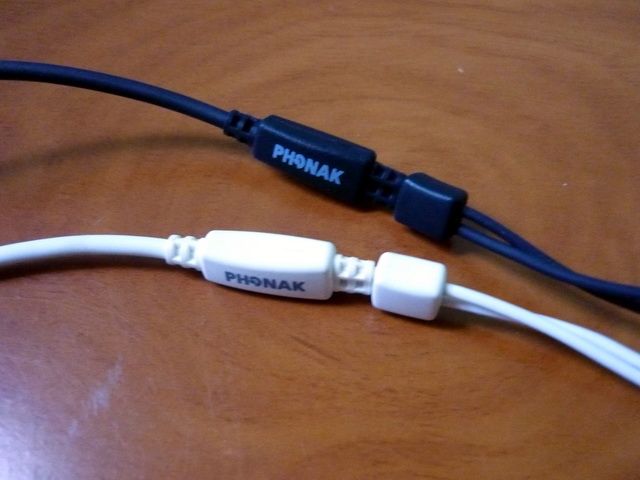
Y-splitter

iPhone / iPod compatible mic
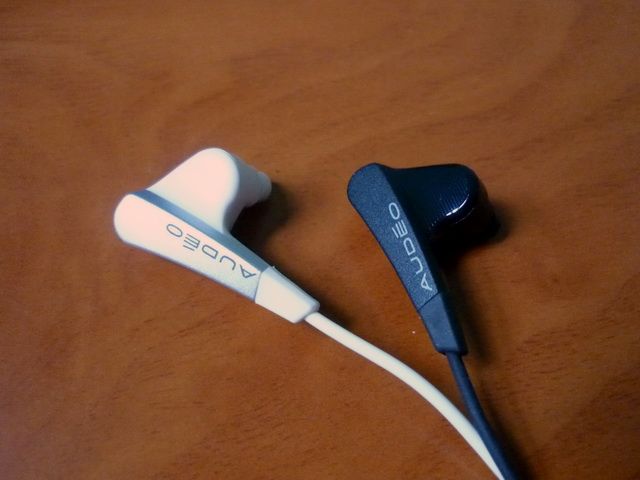
The earpiece without eartips
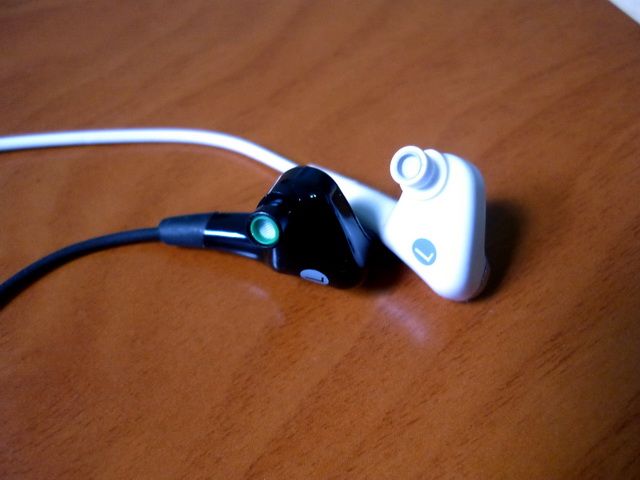
Green filter on 022 and grey filter on 121.
Sound Quality
There are plenty of bass oriented IEM out there - In fact, way too many. While we often place a lot of emphasis on detail, accuracy and resolution on treble and mid range, many seem to care more about quantity over quality when it comes to bass. I am not a bass head myself, and do find the occasional excessive bass causes motion sickness more than anything else. But I do like bass as much as the next guy, provided that it has as much quality as it is in quantity. So what shows a quality bass? The texture! For an example, when a drum was hit and the initial impact spread out, the drum head / membrane continues to vibrate while losing in strength. As the fundamental frequency and overtones decay in different rates, you can hear the ‘decay’ of bass like a series of up and down wave quickly vanishing away. That is the timbre of the drum in which it gives a sonic texture where you won’t mistake a drum note to be something else. When it is done right, it feels just like you are standing next to the drummer and feeling every vibration of the drum head passing through your body. When it is done badly, you only hear the initial impact followed with decay that is totally smooth and hallow without any structure or texture. That is what you will find in most dynamic IEM with bloated / boomy bass, where quantity is emphasized over quality. Balanced armature based IEM on the other hand are often being criticized for not having enough bass. But they often do able to reproduce a textured bass, just not enough in quantity. That is what we called a ‘tight’ bass, where the note is too fast to build up a body. The real magic is to strike a balanced between quantity and quality, but that is easier said than done when there are the balance of other frequency range to consider, not to mention preference of the listener – What the original PFE offers is the freedom for the user to tune between two different sounds by changing the filter. This time however, Phonak is catering a more entry level, more bass-desire part of the market where user care less about accuracy and detail but more toward a musical and fun experience. That’s what the Perfect Bass series is for.
The overall sound signature is very warm, smooth, musical and even a little dark. Almost a classic bass oriented sound if not for a decent mid. Treble extends fairly well, but very smooth. Sparkles and crispiness still present, though taking a big step back behinds the mid and bass. Mid has full body but not overly done, giving sweetness to the vocal while still maintain a decent sense of layers. Bass has good quantity and quality – it reaches very low, big enough for bass head, yet still well textured and fairly impactful, though just a tad slow for balanced armature (but perfectly fine when compared to most dynamic based IEM). Soundstage is a little below average, no doubt a trade off for the added warmness.
So how does the Perfect Bass compared to the original PFE, especially to the black filter (which is more musical, bassier of the two original filters)? Not surprisingly, the big difference is on the bass region. The Perfect Bass has a much more textured and bigger bass to support the vocal. But there are downsides as well – compared to the open sounding grey filter and the musical while still fairly balanced sounding black filter, the new green filter sounds more compressed, losing a bit of resolution and dynamic range at the same time. Another more minor downside is the Perfect Bass requires just little more volume compared to the original PFE as the new green filter adds a little more acoustic impedance to the IEM and lower the sensitivity a bit (though it is not listed on spec). Still, if you were to consider the Perfect Bass series as an independent product of its own at its targeted price range, the overall performance is very admirable.
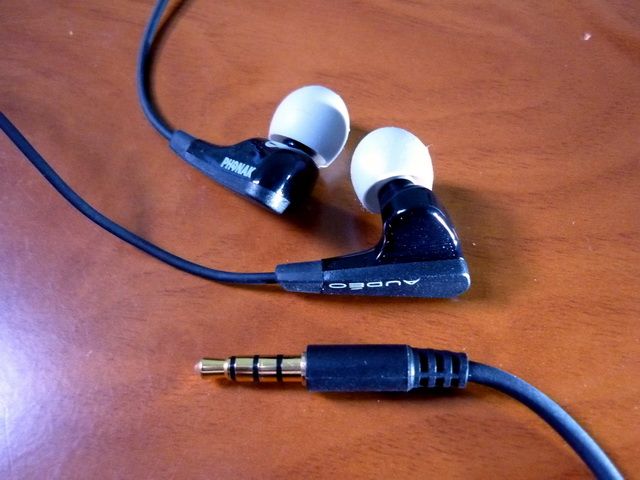
Verdict
While the new Phonak Audéo PFE Perfect Bass doesn’t have many accessories to speak of and comes only with a pair of pre-installed filters, it does have a lower price tag and a 2 years warranty to back it up. If money is not a concern, I’ll recommend the original PFE with a separate purchase of the green filters, just to complete the ‘trio’ of PFE’s sound. But if $100 is the limitation of your budget, PFE Perfect Bass is definitely one of the best options around for a smooth and bassy IEM. Recommended with a Sonic Diamond.
This above rating is for Phonak Audéo PFE 022 Perfect Bass only and may change without notice. Please refer to the list for a complete listing.






